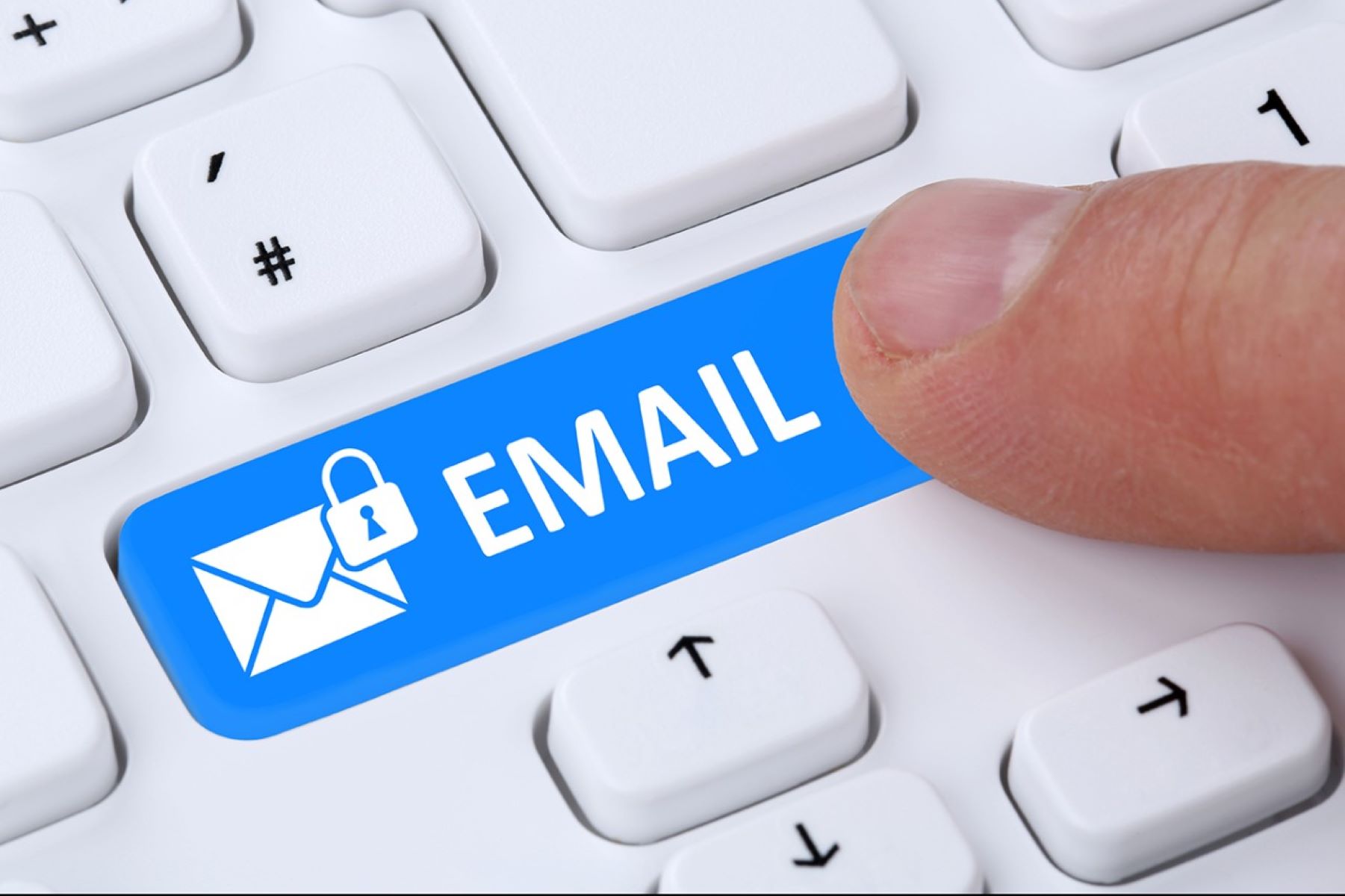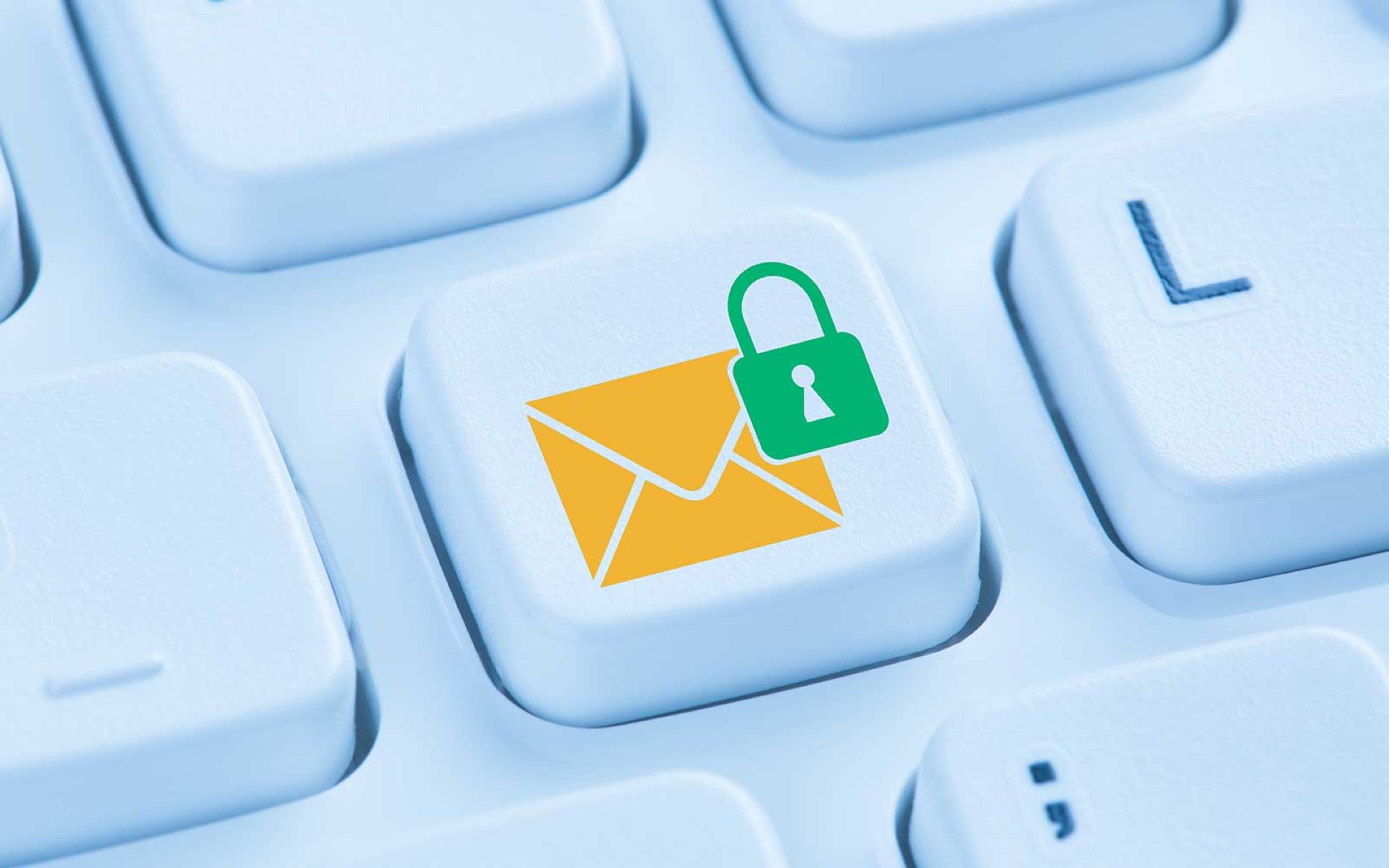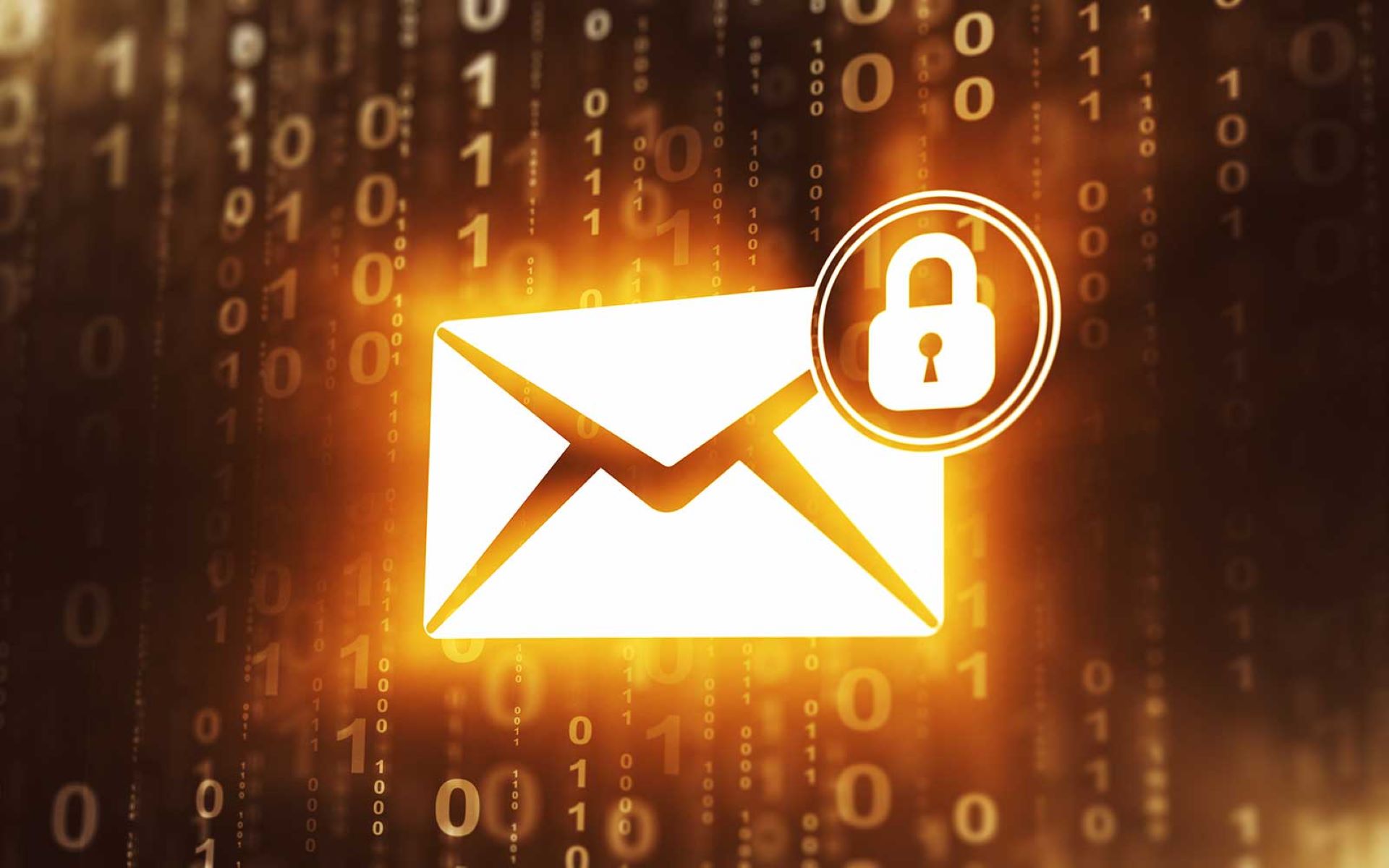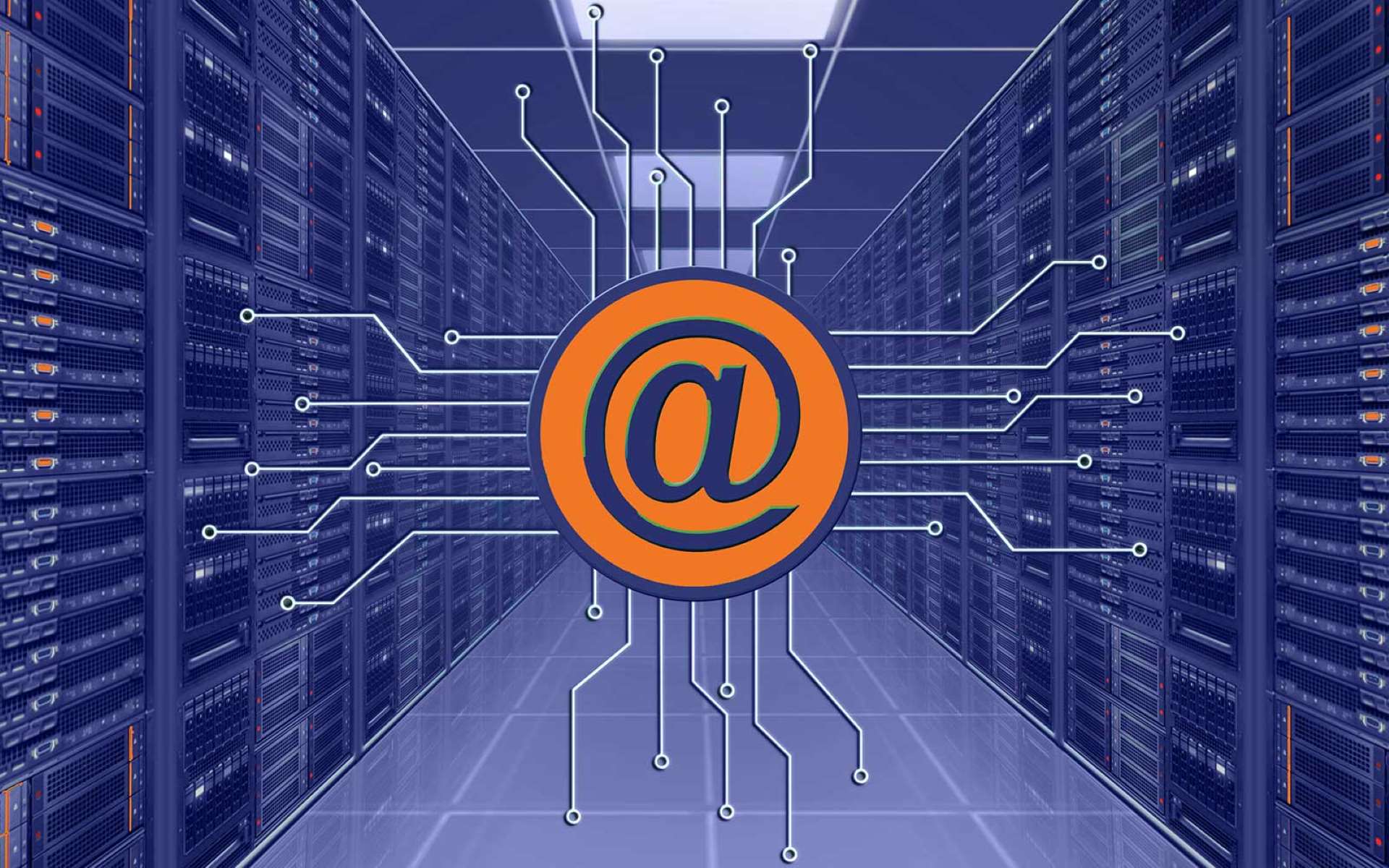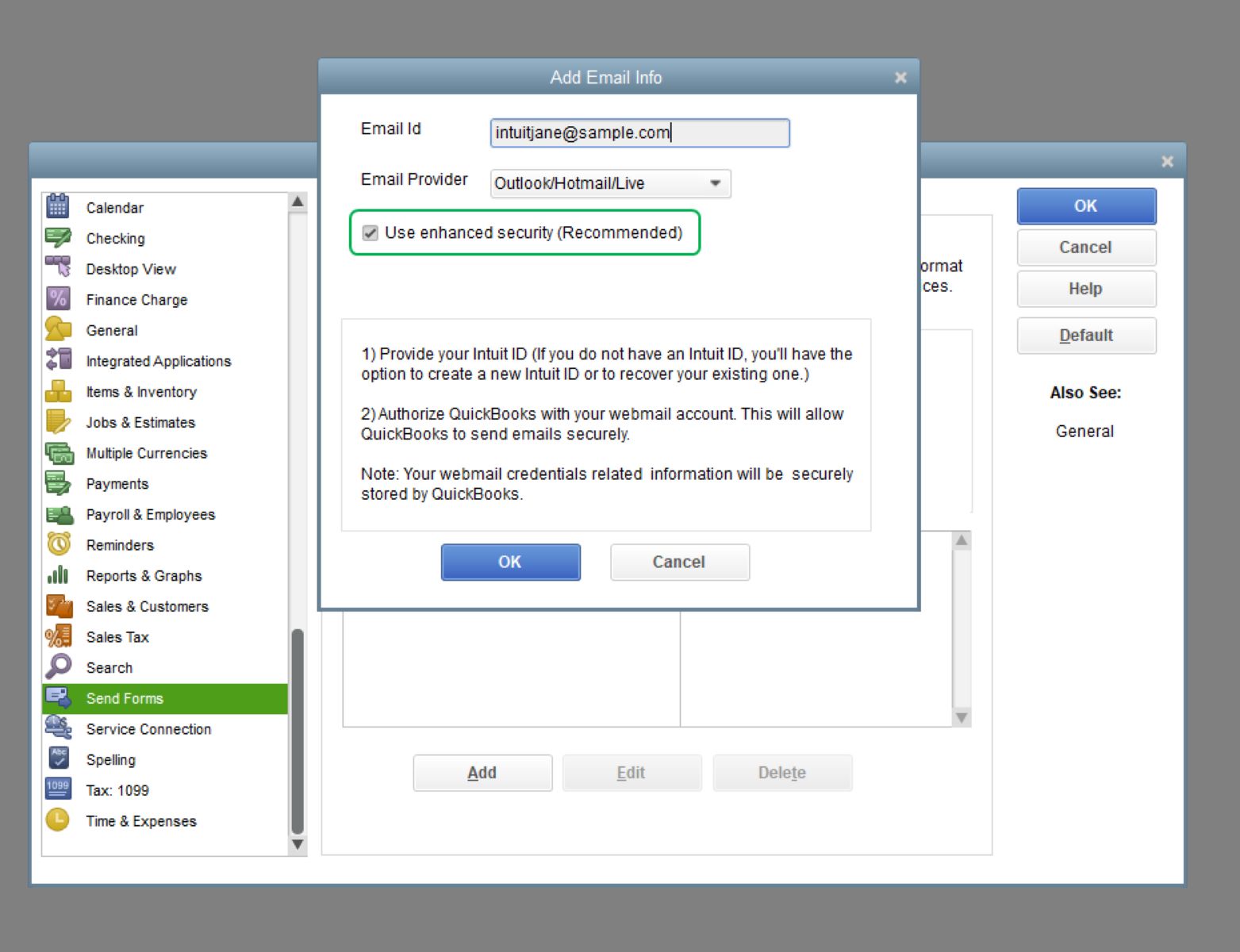Introduction
Welcome to the world of email, where communication has been revolutionized, allowing people from all corners of the globe to connect and share information effortlessly. However, as much as email has simplified our lives, it has also brought along various security concerns.
Every day, countless emails containing sensitive information are sent, making them tempting targets for hackers and cybercriminals. From personal conversations to confidential business dealings, the security of our emails is of paramount importance. Understanding and implementing effective email security measures is crucial to protect our privacy, prevent data breaches, and maintain trust in the digital realm.
In this article, we will delve into the different aspects of email security, exploring the importance and various methods of ensuring the safety of our emails. From secure passwords and authentication to encryption and public key infrastructure (PKI), we will cover the key components of email security. Additionally, we will highlight secure email providers and clients, discuss the significance of filtering and spam protection, and provide best practices for maintaining robust email security.
By the end of this article, you will have a comprehensive understanding of email security and be equipped with essential knowledge to safeguard your emails from unauthorized access and potential threats.
Understanding Email Security
Email security refers to the set of measures and protocols implemented to protect the confidentiality, integrity, and availability of email messages and the information contained within them. It involves safeguarding emails from unauthorized access, interception, modification, and other potential threats.
The primary goal of email security is to ensure that only the intended recipients have access to the contents of an email and that the message remains unaltered during transmission. This is achieved by employing various encryption techniques and authentication mechanisms.
Encryption is a fundamental aspect of email security. It involves encoding the content of an email in such a way that it becomes unreadable to anyone except the intended recipient. Encryption prevents unauthorized individuals, including hackers and eavesdroppers, from intercepting and understanding the information sent via email.
Authentication, on the other hand, verifies the identity of both the sender and the recipient. It ensures that the sender’s email address is genuine and that the recipient is authorized to access the email. By implementing strong authentication measures, email security can effectively prevent spoofing and phishing attacks.
Another important concept in email security is digital signatures. Digital signatures provide a way to verify the authenticity and integrity of an email message. A digital signature is a unique code that is attached to the email, indicating that it comes from a specific sender and has not been tampered with during transmission.
Furthermore, email security also involves protecting against spam, malware, and phishing attempts. Spam filters are used to identify and block unsolicited and potentially harmful emails, reducing the risk of malicious content reaching the recipient’s inbox. Antivirus and anti-malware software play a critical role in detecting and eliminating viruses and malware that may be embedded in email attachments or links.
Understanding the basics of email security is essential in today’s digital landscape. By implementing robust security measures, individuals and businesses can ensure the safety and confidentiality of their email communications, protecting sensitive information and preventing potential data breaches.
Importance of Email Security
Email has become an integral part of our personal and professional lives, facilitating communication and enabling the exchange of sensitive information. However, the growing dependence on email also exposes us to various security risks and threats. Therefore, understanding the importance of email security is crucial in safeguarding our privacy, protecting valuable data, and avoiding potentially devastating consequences.
One of the primary reasons why email security is important is to protect the confidentiality of the information we share through emails. Whether it’s personal conversations, financial transactions, or confidential business strategies, email often contains sensitive and private data that should only be accessible to the intended recipients. Implementing strong security measures ensures that this information remains confidential and is not vulnerable to unauthorized access.
Email security is also vital for maintaining the integrity of the messages we send and receive. Cybercriminals frequently engage in email spoofing and tampering, altering the content or source of emails to deceive recipients or gain unauthorized access. By employing techniques like encryption, authentication, and digital signatures, users can ensure that the integrity of their email communications is preserved, reducing the risk of fraud and manipulation.
In addition to confidentiality and integrity, the availability of email services is equally important. Downtime or disruption in email services can have significant consequences for individuals and businesses. System failures, power outages, or sophisticated attacks can compromise the availability of email communication. By implementing measures such as backup systems and redundancy, organizations can protect against potential disruptions and ensure uninterrupted access to email services.
Moreover, email is often used as a gateway for other threats, such as malware and phishing attacks. Malicious actors can use email as a means to distribute malware, trick users into clicking on malicious links, or obtain sensitive information through phishing scams. Robust email security measures, including spam filters, antivirus software, and user education, can significantly reduce the risk of falling victim to such threats, protecting both individuals and organizations.
By prioritizing email security, individuals and businesses can prevent unauthorized access to sensitive information, maintain the trust of their clients and partners, and mitigate potential legal and financial repercussions. It is essential to stay vigilant, regularly update security measures, and educate oneself on emerging threats to ensure the ongoing protection of email communications.
Secure Passwords and Authentication
When it comes to email security, one of the most essential components is the use of secure passwords and authentication mechanisms. Passwords are the first line of defense against unauthorized access to email accounts, and strong authentication methods add an extra layer of protection.
Creating a secure password is paramount in preventing unauthorized individuals from gaining access to your email account. Avoid using common passwords or predictable combinations such as birthdays or names. Instead, opt for complex passwords that include a mix of uppercase and lowercase letters, numbers, and special characters. Aim for a minimum password length of at least 12 characters to make it more resistant to brute-force attacks.
Additionally, it is crucial to use unique passwords for each online account, including your email account. Reusing passwords across multiple accounts increases the risk of a single compromise affecting all your accounts. Consider using a password manager to securely store and manage your passwords.
Two-factor authentication (2FA) or multi-factor authentication (MFA) is an effective method to bolster the security of your email account. With 2FA or MFA enabled, you will need to provide an additional verification step, such as a one-time password sent to your mobile device, in addition to your password, to access your account. This adds an extra layer of protection, as even if someone manages to obtain your password, they would still need the second factor to gain access.
Biometric authentication, such as fingerprint or facial recognition, is another emerging method of authentication that further enhances security. By using biometric features unique to each individual, these methods significantly reduce the chances of unauthorized access to your email account.
Regularly changing your passwords is also crucial in maintaining the security of your email account. Make it a practice to update your passwords at least every three to six months, or immediately if you suspect any sort of compromise or suspicious activity.
Furthermore, it is essential to be cautious of phishing attempts or social engineering scams that aim to trick you into revealing your password or authentication details. Be mindful of emails or messages that ask for your credentials and always verify the authenticity of the request before providing any sensitive information.
By adopting secure password practices and implementing strong authentication methods, you significantly reduce the risk of unauthorized access to your email account. These measures play a crucial role in maintaining the privacy and security of your email communications and protecting against potential data breaches.
Encryption and Decryption
Encryption and decryption are integral processes in ensuring the security and privacy of email communications. Encryption involves encoding the contents of an email in such a way that it becomes unreadable to anyone except the intended recipient. Decryption, on the other hand, is the process of decoding the encrypted message back into its original readable form.
The purpose of encryption is to protect the confidentiality of the information transmitted via email. It prevents unauthorized individuals, including hackers and eavesdroppers, from intercepting and understanding the content of the email. Encryption works by converting the plain text of an email into ciphertext using cryptographic algorithms.
There are two main types of encryption commonly used in email: symmetric encryption and asymmetric encryption.
Symmetric encryption uses a single “secret” key that is shared between the sender and the recipient. The same key is used to both encrypt and decrypt the message. While symmetric encryption is fast and efficient, it requires a secure and trusted method of sharing the secret key between the sender and the recipient.
Asymmetric encryption, also known as public key encryption, uses two different keys – a public key and a private key. The public key is freely shared with others, while the private key remains securely stored and known only to the recipient. When a sender wants to encrypt an email for a specific recipient, they use the recipient’s public key to encrypt the message. The recipient, in turn, uses their private key to decrypt the message and read its contents. Asymmetric encryption eliminates the need for secure key exchange, as the private key remains with the recipient and is not shared.
It is important to note that while encryption protects the confidentiality of email content, it does not necessarily prevent someone from intercepting or manipulating the email metadata, such as the sender and recipient information or the subject line. To address this, some email providers offer end-to-end encryption, where both the content and metadata of the email are encrypted, providing a higher level of security.
To ensure that the encrypted email can be properly decrypted by the intended recipient, it is vital to use compatible encryption algorithms and adhere to industry standards. Common encryption protocols used in email security include Pretty Good Privacy (PGP) and Secure/Multipurpose Internet Mail Extensions (S/MIME).
By implementing encryption and decryption technologies, individuals and organizations can protect the confidentiality and privacy of their email communications. Whether using symmetric or asymmetric encryption, these methods provide a secure means of transmitting sensitive and confidential information, mitigating the risk of unauthorized access and data breaches.
Public Key Infrastructure (PKI)
Public Key Infrastructure (PKI) is a framework that provides the necessary tools and protocols for secure email communication using asymmetric encryption. It establishes a trusted environment for encryption, decryption, and authentication processes, ensuring the confidentiality and integrity of email messages.
PKI relies on the concept of digital certificates, which are electronic documents that contain key information about the identity of an entity, such as an individual, organization, or device. These certificates are issued by a trusted third-party organization known as a Certificate Authority (CA).
When using PKI for email security, the sender and recipient each have a pair of keys – a public key and a private key. The public key, as the name suggests, is freely shared with others, while the private key remains securely stored and known only to the key’s owner.
When a sender wants to encrypt an email message for a specific recipient, they use the recipient’s public key to encrypt the message. Once encrypted, only the recipient, with their corresponding private key, can decrypt and read the message. This ensures that only the intended recipient can access the contents of the email, maintaining confidentiality.
PKI also plays a crucial role in authentication. Digital certificates, issued by trusted CAs, are used to verify the authenticity and integrity of email messages. When a recipient receives an email, the digital signature contained within the message can be verified using the sender’s public key. If the signature is valid, it confirms that the email originated from the claimed sender and has not been tampered with during transmission.
One of the critical components of a PKI is the Certificate Revocation List (CRL), which contains a list of revoked or invalid certificates. This allows email clients and systems to check the validity and trustworthiness of digital certificates, protecting against the use of compromised or forged certificates.
Policies and procedures are established within PKI to govern the issuance, management, and revocation of digital certificates. This ensures the integrity of the PKI framework and increases trust in the system. Regular updates and maintenance of certificates are crucial to guarantee ongoing security for email communications.
PKI offers a robust and widely adopted framework for secure email communication. By leveraging digital certificates, encryption, and authentication mechanisms, PKI enhances the confidentiality, integrity, and trustworthiness of email messages, protecting sensitive information and mitigating the risk of unauthorized access or data breaches.
Secure Email Providers
When it comes to email security, not all email providers are created equal. Some providers prioritize privacy and security, offering robust features and encryption protocols to ensure the protection of user data. These secure email providers go above and beyond standard security measures to safeguard sensitive information transmitted through their services.
One of the key features offered by secure email providers is end-to-end encryption. This means that the content of the emails is encrypted on the sender’s device and can only be decrypted by the intended recipient. With end-to-end encryption, even if the email provider’s servers are compromised, the content remains secure and unreadable to anyone except the sender and recipient.
Secure email providers also implement strong authentication methods to verify the identity of their users. This could include two-factor authentication (2FA) or multi-factor authentication (MFA), requiring an additional verification step in addition to a password to access the account.
Additionally, secure email providers often have strict privacy policies in place, ensuring that user data is not shared or accessed by third parties without explicit consent. They prioritize user privacy and take steps to prevent unauthorized access or data breaches.
Popular secure email providers include ProtonMail, Tutanota, and Hushmail. ProtonMail, for example, offers end-to-end encryption, zero-access encryption, and strict privacy policies. Tutanota, on the other hand, provides automatic encryption and decryption of emails and contacts, with a focus on a user-friendly interface. Hushmail offers encrypted email services and secure web forms, suitable for businesses looking for secure communication options.
When selecting a secure email provider, it is essential to consider factors such as the level of encryption offered, authentication methods, privacy policies, and user reviews. It’s worth noting that while secure email providers prioritize the security of email communications, they may have limitations or additional costs associated with higher levels of security or premium features.
By choosing a secure email provider, individuals and organizations can enjoy an elevated level of protection for their email communications. These providers offer additional security features and encryption protocols that ensure the confidentiality, integrity, and privacy of sensitive information exchanged via email.
Secure Email Clients
While secure email providers focus on protecting email communications at the server level, secure email clients play a crucial role in ensuring the security and privacy of emails on the user’s device. These email clients provide additional features and encryption protocols to enhance the security of email communication.
Secure email clients offer end-to-end encryption, which means that the email content is encrypted on the originating device and can only be decrypted by the intended recipient. This ensures that even if the email is intercepted or accessed by unauthorized individuals, its contents remain unreadable.
One popular secure email client is Mozilla Thunderbird, an open-source and feature-rich email client that supports a variety of encryption methods. Thunderbird offers the option to configure and use PGP (Pretty Good Privacy) encryption, allowing users to encrypt their email messages and attachments with ease.
Another secure email client is Mailfence, which combines a robust email client with strong encryption capabilities. Mailfence supports end-to-end encryption, digital signatures, and two-factor authentication, providing comprehensive security for email communications. Additionally, Mailfence integrates with various third-party software for enhanced security measures.
ProtonMail, in addition to being a secure email provider, also offers a secure email client. ProtonMail’s email client utilizes end-to-end encryption and offers features such as self-destructing emails and password-protected messages. It is designed with security as a top priority, making it an excellent choice for those seeking enhanced privacy and protection.
When selecting a secure email client, it is important to consider factors such as the level of encryption offered, ease of use, compatibility with various platforms and devices, and integration with other security tools. User reviews and community support can provide valuable insights into the overall performance and security of the email client.
It is crucial to note that the security of email communication is a shared responsibility between the email client and the service provider. Utilizing both a secure email provider and a secure email client ensures a comprehensive and layered approach to email security.
Secure email clients play a vital role in protecting the confidentiality and integrity of email communications by offering robust encryption features and authentication methods. By selecting a secure email client that aligns with your security needs, you can enhance the privacy and security of your email communications.
Filtering and Spam Protection
Filtering and spam protection are essential components of email security that help users mitigate the influx of unwanted and potentially harmful emails. These features work together to identify and filter out spam, malicious content, and other forms of unsolicited messages.
Email filtering is the process of sorting and categorizing incoming emails based on predefined rules and criteria. These rules can include sender information, subject line keywords, email attachments, and other factors. Filtering allows users to prioritize and organize their inbox, ensuring that important emails are easily accessible while unwanted messages are sent to a separate folder or marked as spam.
Spam protection specifically targets unsolicited and unwanted messages, commonly known as spam. Spam emails often contain advertisements, scams, phishing attempts, or malware. Spam filters utilize various techniques to identify and block spam, reducing its impact on users’ inboxes.
One common technique used in spam protection is content-based filtering. This method involves analyzing the content of an email, including the text, links, and attachments, to determine if it exhibits characteristics indicative of spam. These characteristics may include excessive use of specific keywords, suspicious links, or attachment types commonly associated with spam emails.
Another technique used in spam protection is reputation-based filtering. Reputation-based filtering assesses the reputation and trustworthiness of an email sender based on previous behavior and feedback from users. If an email sender has been identified as a known source of spam or other malicious content, their emails may be flagged or blocked altogether.
In addition to these techniques, machine learning and artificial intelligence algorithms are commonly employed in spam protection. These technologies continuously learn and adapt to new patterns and variations of spam, enabling more accurate and efficient identification and filtering.
While spam filters are designed to capture and separate unsolicited emails, false positives can occur, resulting in legitimate emails being misidentified as spam. It is important for users to regularly review their spam folders to ensure that no important emails are missed or mistakenly labeled as spam.
By implementing robust filtering and spam protection measures, users can significantly reduce the risk of falling victim to scams, phishing attempts, and other forms of malicious content. These features enhance the overall email security by keeping inboxes organized, minimizing distractions, and providing a safer environment for communication.
Email Security Best Practices
Protecting the security of your email communications requires implementing a variety of best practices that help mitigate risks and prevent unauthorized access. By following these email security best practices, you can enhance the confidentiality, integrity, and privacy of your email communications:
1. Use Strong Passwords: Choose unique passwords for each of your online accounts, including your email. Create passwords that are complex, combining uppercase and lowercase letters, numbers, and special characters. Avoid using predictable information like birthdays or names.
2. Enable Two-Factor Authentication: Utilize two-factor authentication (2FA) or multi-factor authentication (MFA) whenever possible. Adding an extra layer of verification, such as a one-time password sent to your mobile device, provides an additional level of security for accessing your email account.
3. Regularly Update and Patch Software: Keep your email client, operating system, and security software up to date. Regular updates ensure that you have the latest security patches and bug fixes to protect against emerging threats.
4. Be Wary of Phishing Attempts: Be cautious of emails that ask for personal information, click on suspicious links, or download attachments from unknown sources. Always verify the legitimacy of the request or sender before providing any sensitive information.
5. Utilize Encryption: When sending sensitive or confidential information, consider using encryption methods to protect the content of the email. Encryption ensures that only the intended recipient can decipher and read the message.
6. Beware of Public Wi-Fi Networks: Avoid accessing your email or other sensitive accounts when connected to public Wi-Fi networks. Public Wi-Fi is often insecure and can expose your email communications to potential attackers. If necessary, use a virtual private network (VPN) for secure access.
7. Regularly Backup your Emails: Create regular backups of your important emails, especially those containing critical information. This ensures that you have a copy of your data in case of accidental deletion, hardware failure, or other unforeseen circumstances.
8. Keep an Eye on Email Attachments: Do not open email attachments from unknown or suspicious senders. Attachments can contain viruses or malware that can compromise the security of your device and access your personal data.
9. Educate Yourself and Staff: Stay informed about the latest email security threats and educate yourself and your staff about best practices. Regularly update your knowledge regarding emerging phishing techniques, social engineering scams, and other email-related risks.
10. Regularly Monitor your Account Activity: Keep a regular check on your email account activity. If you notice any unusual or suspicious activity, change your password immediately and report the issue to your email provider.
By implementing these email security best practices, you can significantly reduce the risk of unauthorized access, protect your sensitive information, and maintain the confidentiality and integrity of your email communications.
Conclusion
Email security is an essential aspect of our digital lives, as email continues to be a primary mode of communication. Protecting the privacy, confidentiality, and integrity of our email communications is crucial in minimizing the risk of data breaches, unauthorized access, and malicious attacks.
Throughout this article, we have explored various elements of email security, including the importance of secure passwords and authentication, encryption and decryption techniques, the role of public key infrastructure (PKI), and the significance of secure email providers and clients.
By utilizing strong passwords and authentication methods, we can establish a solid foundation for protecting our email accounts. Implementing encryption and decryption processes ensures the confidentiality of our email content, while PKI provides a robust framework for secure communication.
Choosing secure email providers and clients allows us to benefit from enhanced encryption, authentication, and other protective features, bolstering the overall security of our email communications.
Furthermore, filtering and spam protection mechanisms help us manage the influx of unwanted emails, reducing the risk of falling victim to scams, phishing attempts, and other malicious content.
By following email security best practices, such as using strong passwords, enabling two-factor authentication, being vigilant about phishing attempts, and regularly updating software, we can greatly minimize security risks and maintain the privacy of our email communications.
Remember that email security is an ongoing process that requires continuous awareness and adaptation to evolving threats. Stay informed about emerging email security risks, educate yourself and others, and regularly review and update your security measures to maintain a strong defense against potential threats.
By prioritizing email security and implementing the recommended measures, we can protect our personal and professional information, maintain the trust of our contacts, and continue to benefit from the convenience and efficiency that email communication offers.







